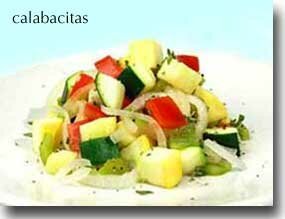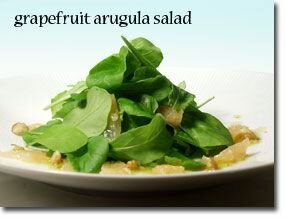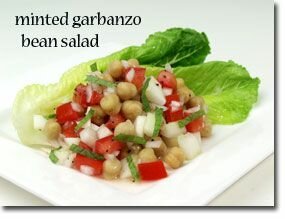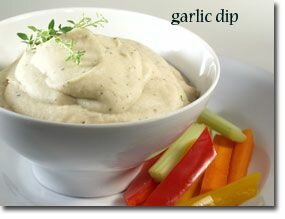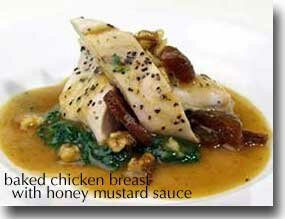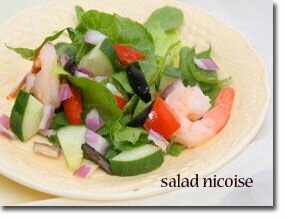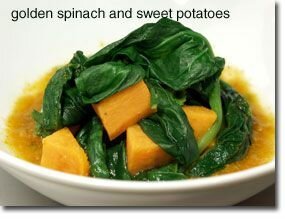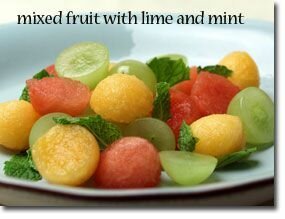July 26, 2013
Check Out What's New On Our Website
Healthy
Saute is essentially a way of lightly steaming Bok Choy that greatly
enhances its flavor. Studies have found that steamed cabbage can provide
you with some special cholesterol-lowering benefits ... For more see What's New and Beneficial about Cabbage.
Today's Recipe
If you don't know what to serve for dinner tonight ...
This is a great recipe to help add more omega-3 fatty acids to your
meal. Combined with the salad greens, you get a wide range of nutrients
that will work together synergistically towards optimal health. Enjoy!
15-Minute Halibut Salad
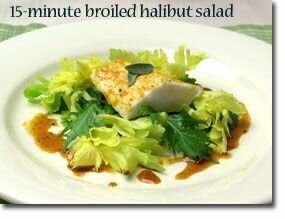
Prep and Cook Time: 15 minutes
Ingredients:
- 4 medium cloves garlic, pressed
- 1/2 lb mixed salad greens
- 4 - 6 oz halibut steaks or fillets
- 1 TBS + 1/4 cup fresh lemon juice
- salt and cracked black pepper to taste
- 1 cup vegetable broth
- 3 TBS fresh chopped sage (or 3 tsp dried sage)
- *optional 3 TBS extra virgin olive oil
- Press garlic and let it sit for 5 minutes to bring out its health-promoting properties.
- Rinse and dry salad greens by using salad spinner if possible. Place greens mixture on 4 plates.
- Rub halibut with 1 TBS lemon juice and season with a little salt and pepper.
- Heat broth and add halibut; cover and cook for 10 minutes for each inch of thickness.
- Remove fish from pan and place on salad greens.
- Discard extra broth or use for soup. In same pan add garlic, sage and 1/4 cup lemon juice to hot pan and heat for about 30 seconds.
- If you'd like to add olive oil, do so after turning off heat. Stir mixture together for a few seconds and then drizzle over salad. Season with salt and cracked black pepper.
In-Depth Nutritional Profile for 15-Minute Halibut Salad
Healthy Food Tip
Can you give me some tips to help me meet my water consumption goals?
How many times have you been told to make sure you drink eight cups of water each day? Yet, how many days have you actually finished eight cups? Ensuring that you drink adequate amounts of water can be challenging.
But since high-quality water is definitely a cornerstone of nutrition, and about 60% of our total body weight, we wanted to share with you some easy-to-follow tips to help you reach your water intake goals and ensure that you are benefiting the most from your water consumption. When following these tips, however, always try to keep in mind how critical it is to start out with high-quality water!
In most cases, "high-quality" means filtered water, spring water, or natural mineral waters. Mineral waters can provide special benefits for the exact reason implied in their name—you'll find calcium, magnesium, and several other minerals to be supplied in significant amounts by these waters. What "high-quality" almost never means is plain, unfiltered tap water. Plain tap water may contain a variety of contaminants, including pesticide residues and heavy metals, although quality varies between municipalities. With this critical water quality step in mind, here are some easy-to-follow tips:
- Bring filtered or bottled water with you whenever you will have to sit for prolonged periods of time. These include times at work or movies, on car trips or commutes to and from work, bus rides, or just TV watching. Sip continuously during these times.
- Maximize water drinking at times of excessive water loss. For example, if you perspire after yard work or exercise, that's a perfect time to follow your thirst and increase your water intake.
- Be consistent, and keep your water intake adequate on a morning-afternoon-and-evening basis. Although the exact amount of water needed each day may vary, you can use a general guideline of about 13 cups of water each day for men and 9 cups for women, matching the suggestions set by the National Academy of Sciences in its Dietary Reference Intake (DRI) recommendations
- Be careful drinking too much water too late in the day. Experiencing sleep interruptions because you need to wake up to go to the bathroom will not help your overall health.
- Think of water as a nutritional necessity—the same as vitamin C, or calcium, or protein, or any other nutrient. It's equally essential!

